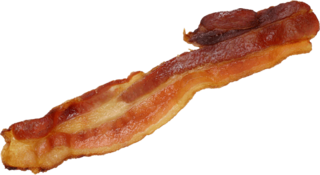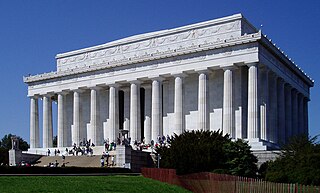Charles Bacon may refer to:
- Charles Bacon (sculptor) (1821–1886), English 19th-century sculptor
- Charles James Bacon Jr. (1885–1968), American athlete
- Charles R. Bacon, late 20th-century American geologist
Charles Bacon may refer to:

Francis Bacon, 1st Viscount St Alban PC, also known as Lord Verulam, was an English philosopher and statesman who served as Attorney General and Lord Chancellor of England under King James I. Bacon led the advancement of both natural philosophy and the scientific method and his works remained influential even in the late stages of the Scientific Revolution.

Kevin Norwood Bacon is an American actor. Known for his leading man and character roles, Bacon has received numerous accolades, including a Golden Globe Award, a Screen Actors Guild Award, and a nomination for a Primetime Emmy Award.

Roger Bacon, also known by the scholastic accolade Doctor Mirabilis, was a medieval English philosopher and Franciscan friar who placed considerable emphasis on the study of nature through empiricism. In the early modern era, he was regarded as a wizard and particularly famed for the story of his mechanical or necromantic brazen head. He is sometimes credited as one of the earliest European advocates of the modern scientific method, along with his teacher Robert Grosseteste. Bacon applied the empirical method of Ibn al-Haytham (Alhazen) to observations in texts attributed to Aristotle. Bacon discovered the importance of empirical testing when the results he obtained were different from those that would have been predicted by Aristotle.

John Bacon was a British sculptor who worked in the late 18th century. Bacon has been reckoned the founder of the British School of sculpture. He won numerous awards, held the esteem of George III, and examples of his works adorn St Paul's Cathedral and Westminster Abbey in London, Christ Church, Oxford, Pembroke College, Oxford, Bath Abbey and Bristol Cathedral.

Bacon is a type of salt-cured pork made from various cuts, typically the belly or less fatty parts of the back. It is eaten as a side dish, used as a central ingredient, or as a flavouring or accent.

A BLT is a type of sandwich, named for the initials of its primary ingredients, bacon, lettuce, and tomato. It can be made with varying recipes according to personal preference. Simple variants include using different types of lettuce or tomatoes, toasting or not, or adding mayonnaise. More pronounced variants can include using turkey bacon or tofu in place of bacon, or removing the lettuce entirely.

Daniel Chester French was an American sculptor of the late nineteenth and early twentieth centuries. He is best known for his 1874 sculpture The Minute Man in Concord, Massachusetts, and his 1920 monumental statue of Abraham Lincoln in the Lincoln Memorial in Washington, D.C.

Bacon's Rebellion was an armed rebellion held by Virginia settlers that took place from 1676 to 1677. It was led by Nathaniel Bacon against Colonial Governor William Berkeley, after Berkeley refused Bacon's request to drive Native American Indians out of Virginia. Thousands of Virginians from all classes and races rose up in arms against Berkeley, chasing him from Jamestown and ultimately torching the settlement. The rebellion was first suppressed by a few armed merchant ships from London whose captains sided with Berkeley and the loyalists. Government forces arrived soon after and spent several years defeating pockets of resistance and reforming the colonial government to be once more under direct Crown control.

Henry Bacon was an American Beaux-Arts architect who oversaw the engineering and design of the Lincoln Memorial in Washington, D.C., built between 1915 and 1922, which was his final project before his 1924 death.
Events from the year 1946 in art.
Events from the year 1988 in art.
Events from the year 1976 in art.
Events from the year 1971 in art.
The year 1892 in art involved some significant events.
Robert or Bob Chambers may refer to:
John Bacon may refer to:

Death and the Sculptor, also known as the Milmore Monument and The Angel of Death and the Young Sculptor is a sculpture in bronze, and one of the most important and influential works of art created by sculptor Daniel Chester French. The work was commissioned to mark the grave in Forest Hills Cemetery in Jamaica Plain, Boston, Massachusetts, of the brothers Joseph (1841–1886), James and Martin Milmore (1844–1883). It has two figures effectively in the round, linked to a background relief behind them. The right-hand figure represents a sculptor, whose hand holding a chisel is gently restrained by the fingers of the left-hand figure, representing Death, here shown as a winged female.

John J. Boyle was an American sculptor active in Philadelphia in the last decades of the 19th century, known for his large-scale figurative bronzes in public settings, and, particularly, his portraiture of Native Americans.

The statue of George III, Somerset House, formally titled George III and the River Thames, is a Grade I listed outdoor bronze sculptural group depicting King George III and Neptune or Father Thames, located in the quadrangle of Somerset House, London, England. The sculptor was John Bacon, and the statue was erected between 1778 and 1789.